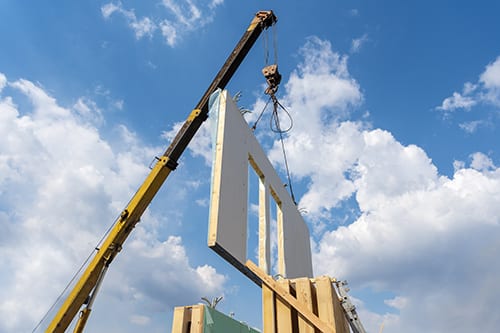 There are many benefits of off-site construction, which involves moving complex building processes to a controlled environment. The basic idea is to assemble material quickly and precisely in this type of setting so it can arrive at the job site later, ready to install.
There are many benefits of off-site construction, which involves moving complex building processes to a controlled environment. The basic idea is to assemble material quickly and precisely in this type of setting so it can arrive at the job site later, ready to install.
This effective construction approach, which usually involves modular construction and/or prefabrication on projects with repetitive design layouts, has been a growing trend among contractors in recent years.
Check out these 6 key benefits of off-site construction
- Improve construction quality. Working in a controlled setting makes it easier to produce assemblies that meet exact project specifications.
- Increase project efficiency. Off-site construction typically allows for greater efficiency because, when the same processes are repeated over and over, they tend to take less time to complete and there is less chance for error. Additionally, mitigating circumstances like bad weather usually don’t delay a project if processes are taking place in a controlled setting.
- Enhance predictability. A controlled setting can sometimes be more predictable than a job site. For example, due to the repetitive nature of off-site construction projects, managers have a better idea of what costs will be. Contractors can also reliably predict the timeframe for production, helping to better coordinate installation.
- Amp up safety. Generally, a controlled environment leads to greater safety overall. Less job site activity due to increased off-site assembly can help limit how much crew members have to work with potentially dangerous tools and equipment. Additionally, processes are often automated in a controlled setting, which can keep more employees out of harm’s way.
- Reduce material waste. Job sites can waste material as it’s cut to fit. With off-site construction, material that is left over from one project can easily be inventoried for another.
- Succeed amid a workforce shortage. Typically, fewer workers are required in an off-site construction setting, and accomplishing more in a controlled setting can help reduce on-site scheduling. Fewer workers means lower wage costs and potentially more affordable building prices.
Related posts
Asbestos in construction | 5 tips to prevent exposure, mesothelioma
Student housing trends for 2020 | More amenities in residence halls